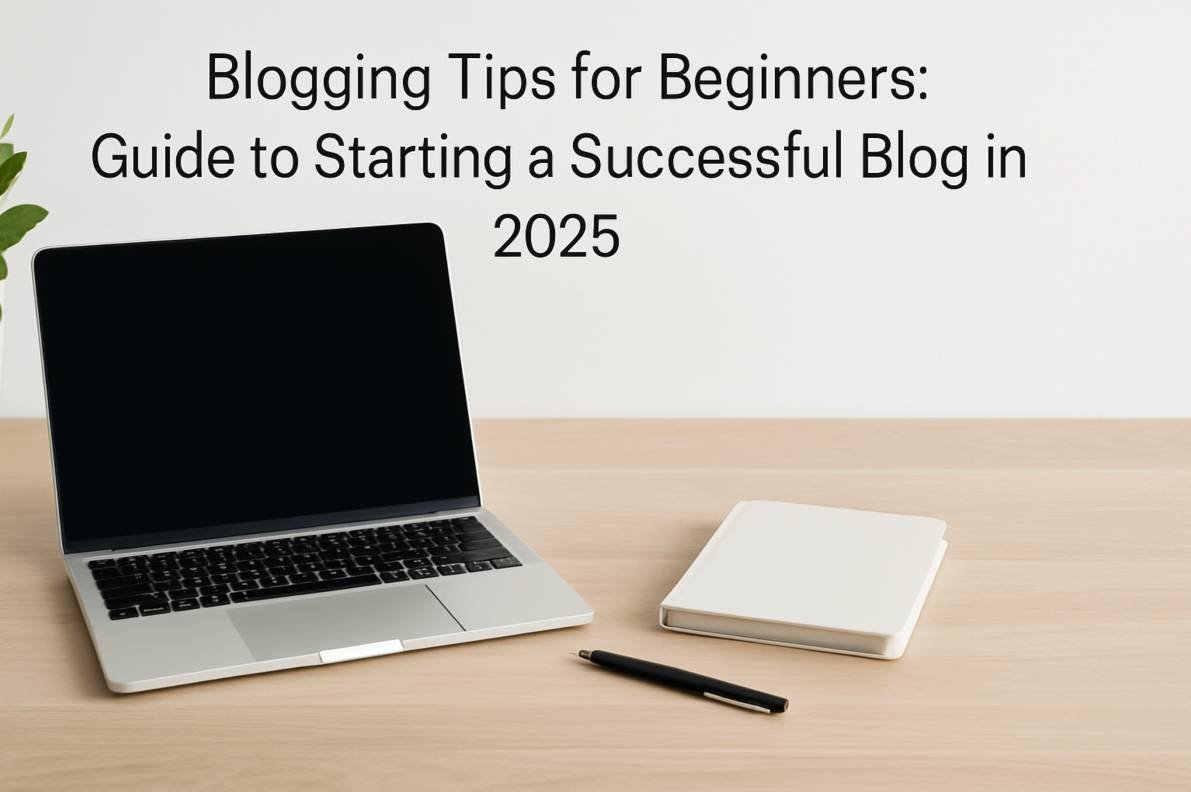Listen, I get it.
You want to start a blog, but you’re staring at your computer screen feeling completely overwhelmed. Trust me, I’ve been there.
When I started blogging years ago, I made every mistake in the book. I picked the wrong niche, wrote terrible headlines, and had zero understanding of how to actually get people to read my content.
But here’s the thing—those mistakes taught me everything I know today about building successful blogs.
After helping thousands of bloggers launch their sites and generating millions of visitors across various blogs, I’ve discovered the exact formula that separates successful bloggers from those who give up after three months.
Today, I’m going to share everything with you.
The Hard Truth About Blogging (That Most “Gurus” Won’t Tell You)
Before we dive into the strategies, let me be brutally honest about what you’re getting into:
- 95% of blogs fail within the first year
- Most beginner bloggers make $0 in their first 6 months
- It typically takes 6-12 months to see meaningful traffic
- You’ll need to publish consistently for at least a year to see real results
But here’s the good news: The 5% who succeed follow a proven system. And I’m about to give you that exact system.
Step 1: Choose Your Niche Like Your Success Depends on It (Because It Does)
This is where most beginners mess up. They think broader is better.
Wrong.
I’ve analyzed thousands of successful blogs, and the winners all have one thing in common: They dominate a specific niche.
Here’s my niche selection formula:
The Sweet Spot = Your Expertise + Market Demand + Monetization Potential
Let me break this down:
Your Expertise: What do people always ask you about? What could you talk about for hours without getting bored?
Market Demand: Are people actually searching for this information? Use Google Keyword Planner or Ubersuggest to verify.
Monetization Potential: Can you eventually make money from this niche through affiliate marketing, courses, or services?
Examples of winning niches:
- Personal finance for millennials
- Plant-based cooking for busy moms
- WordPress tutorials for small businesses
- Productivity tips for remote workers
Notice how specific these are? That’s intentional.
Step 2: Set Up Your Blog the Right Way (Don’t Skip This)
I see too many beginners rush through the technical setup and regret it later.
Platform Choice:
Go with WordPress.org. Period.
I’ve tested every platform, and WordPress gives you the flexibility to grow. Yes, it’s slightly more technical, but trust me—you’ll thank me later.
Hosting Recommendation:
Start with a reliable host like Bluehost or SiteGround. They offer:
- One-click WordPress installation
- Free domain for the first year
- 24/7 support
- Free SSL certificate
Essential Plugins to Install Immediately:
- Yoast SEO – For search engine optimization
- Wordfence – For security
- UpdraftPlus – For backups
- WP Rocket – For site speed (paid, but worth it)
Theme Selection:
Choose something clean and fast. I recommend:
- Astra (free)
- GeneratePress (free)
- StudioPress themes (premium)
Don’t get fancy with your design initially. Focus on content first.
Step 3: Create a Content Strategy That Actually Works
Here’s where most bloggers go wrong: They write about whatever they feel like writing about.
That’s not a strategy—that’s a hobby.
My proven content planning process:
Week 1: Keyword Research
Use these free tools:
- Google Keyword Planner
- Ubersuggest
- AnswerThePublic
- Google Trends
- Ahrefs
Look for keywords with:
- 500+ monthly searches
- Low to medium competition
- Clear commercial intent
Week 2: Content Calendar Creation
Plan 3 months ahead. I use this simple formula:
- 40% How-to tutorials
- 30% List posts (“10 Ways to…”)
- 20% Case studies and examples
- 10% Industry news and trends
Week 3: Content Creation
Batch your writing. I write 4-5 posts in one day, then schedule them.
The Perfect Blog Post Structure:
- Compelling headline (I’ll show you how to write these)
- Hook in the first 50 words
- Promise what they’ll learn
- Deliver on that promise with actionable steps
- Strong conclusion with next steps
Step 4: Write Headlines That Force People to Click
Your headline determines whether someone reads your post or scrolls past it.
I’ve tested thousands of headlines, and these formulas work every time:
The Number Formula:
“7 Blogging Tips That Increased My Traffic by 300%”
The How-To Formula:
“How to Start a Blog That Actually Makes Money”
The Ultimate Guide Formula:
“The Ultimate Guide to Blogging for Beginners”
The Mistake Formula:
“5 Blogging Mistakes That Are Killing Your Traffic”
My headline checklist:
- Under 60 characters (so it doesn’t get cut off in Google)
- Includes your target keyword
- Creates curiosity or urgency
- Makes a specific promise
Tool I use: CoSchedule’s Headline Analyzer to test headline effectiveness.
Step 5: Master the Art of Writing Content People Actually Want to Read
Here’s the reality: Most blog content is boring.
People don’t have time to read 3,000-word essays. They want practical, actionable advice they can implement immediately.
My content writing formula:
Opening Hook (First 50 words):
Start with a story, statistic, or bold statement that grabs attention.
The Promise:
Tell them exactly what they’ll learn and why it matters.
The Delivery:
Break your content into easily digestible sections using:
- Short paragraphs (2-3 sentences max)
- Bullet points and numbered lists
- Subheadings every 300-400 words
- Images and screenshots to break up text
The Proof:
Include data, examples, and case studies. People trust content backed by evidence.
The Close:
Summarize key points and give them a clear next step.
Writing tips that make a difference:
- Write like you’re talking to a friend
- Use “you” and “your” frequently
- Avoid jargon and complex words
- Tell stories to illustrate points
- Ask questions to keep readers engaged
Step 6: SEO That Actually Moves the Needle
SEO doesn’t have to be complicated. Here’s what actually matters:
On-Page SEO Checklist:
- Include your target keyword in the title
- Use the keyword in the first 100 words
- Add the keyword to one subheading
- Create a compelling meta description
- Use descriptive alt text for images
- Keep URLs short and keyword-rich
Internal Linking Strategy:
Link to 2-3 of your other relevant posts in every new post. This keeps people on your site longer and helps with SEO.
Image Optimization:
- Compress images before uploading
- Use descriptive file names
- Add alt text to every image
- Include keywords naturally in alt text
Technical SEO Basics:
- Install an SSL certificate (your host usually provides this free)
- Ensure your site loads in under 3 seconds
- Make sure your site works on mobile devices
- Create an XML sitemap and submit it to Google Search Console
Step 7: Build Your Email List from Day One
This is non-negotiable. Your email list is your most valuable asset.
Social media platforms can disappear or change their algorithms overnight. But your email list? That’s yours forever.
Lead Magnet Ideas That Work:
- Checklists and cheat sheets
- Templates and worksheets
- Mini email courses
- Resource libraries
- Industry reports
Email Marketing Tools I Recommend:
- ConvertKit (best for bloggers)
- Mailchimp (good free option)
- ActiveCampaign (advanced features)
Email Content Strategy:
- Welcome series (5-7 emails introducing yourself and your best content)
- Weekly newsletter with your latest posts
- Occasional promotional emails (but provide value first)
Step 8: Promote Your Content Like Your Life Depends on It
Creating great content is only half the battle. The other half? Getting people to actually see it.
Social Media Strategy:
Don’t try to be everywhere. Pick 1-2 platforms where your audience hangs out and dominate those.
For each post, create:
- Custom graphics for social sharing
- Multiple social media posts from different angles
- Short video teasers
- Quote graphics from the post
Community Engagement:
- Join Facebook groups in your niche
- Participate in relevant subreddits
- Comment thoughtfully on other blogs
- Guest post on established blogs
Outreach Strategy:
- Reach out to other bloggers for collaborations
- Share their content and build relationships
- Interview experts in your niche
- Participate in podcasts as a guest
Step 9: Analyze, Optimize, and Double Down on What Works
Data doesn’t lie. Here’s what to track:
Essential Metrics:
- Organic traffic growth
- Email subscriber growth
- Average time on page
- Bounce rate
- Social shares and comments
Tools I Use:
- Google Analytics (free)
- Google Search Console (free)
- SEMrush or Ahrefs (paid, but worth it)
Monthly Review Process:
- Identify your top 5 performing posts
- Analyze what made them successful
- Create more content around those topics
- Update underperforming posts with new information
- Fix any technical issues
Step 10: Monetize Your Blog (When You’re Ready)
Don’t rush this. Focus on building an audience first, then monetize.
Timeline for Monetization:
- Months 1-3: Focus on content and traffic
- Months 4-6: Start affiliate marketing
- Months 7-12: Create digital products
- Year 2+: Launch courses and coaching
Monetization Methods That Work:
Affiliate Marketing:
Promote products you actually use and love. My rule: Only recommend what you would recommend to your best friend.
Digital Products:
- Ebooks ($9-$47)
- Online courses ($97-$997)
- Templates and tools ($19-$97)
Services:
- Consulting ($100-$500/hour)
- Done-for-you services ($500-$5,000+)
- Coaching programs ($500-$2,000+)
Common Beginner Mistakes That Kill Blogs (And How to Avoid Them)
Mistake #1: Trying to Be Perfect
Your first post won’t be perfect. Publish it anyway. You’ll improve with practice.
Mistake #2: Inconsistent Publishing
It’s better to publish one quality post per week consistently than to publish daily for a month and then disappear.
Mistake #3: Ignoring Your Audience
Respond to comments. Answer emails. Engage on social media. Your readers are real people.
Mistake #4: Focusing Only on Traffic
1,000 engaged email subscribers are worth more than 10,000 random visitors.
Mistake #5: Giving Up Too Soon
Most successful bloggers didn’t see real results until months 6-12. Persistence wins.
Your 90-Day Action Plan
Days 1-30: Foundation
- Choose your niche
- Set up WordPress and essential plugins
- Create your first 10 blog posts
- Set up email opt-in forms
Days 31-60: Growth
- Publish 2 posts per week
- Start building your email list
- Engage on social media
- Begin basic SEO optimization
Days 61-90: Optimization
- Analyze your best-performing content
- Start affiliate marketing
- Guest post on other blogs
- Plan your first digital product
The Reality Check You Need to Hear
Blogging isn’t a get-rich-quick scheme. It’s a long-term business strategy that requires:
- Consistent effort (at least 10-15 hours per week)
- Patience (results take 6-12 months)
- Continuous learning (the landscape changes constantly)
- Genuine desire to help people (this shows in your content)
But here’s what makes it worth it:
- You can work from anywhere
- You build a valuable asset
- You establish yourself as an expert
- You can generate passive income
- You make a real impact on people’s lives
My Personal Results (And What You Can Expect)
Let me share some real numbers from my blogging journey:
Year 1:
- 50,000 monthly visitors
- 5,000 email subscribers
- $12,000 in revenue
Year 2:
- 200,000 monthly visitors
- 25,000 email subscribers
- $75,000 in revenue
Year 3:
- 500,000 monthly visitors
- 75,000 email subscribers
- $200,000+ in revenue
Your results will vary, but this shows what’s possible with consistent effort and the right strategy.
What’s Your Next Move?
Here’s exactly what I want you to do right now:
- Pick your niche (spend 30 minutes thinking about this)
- Set up your blog (this weekend)
- Write your first post (by next Friday)
- Share it on social media (the day you publish)
Don’t overthink it. Don’t wait for the perfect moment. Start now.
The best time to plant a tree was 20 years ago. The second-best time is now.
Your blogging journey starts with a single post. What are you waiting for?
Remember: Every expert blogger started exactly where you are right now. The only difference between them and you is that they decided to start.
Make today the day you start building your blogging empire.
Suggested reads: How to Start a Blog for Beginners 2025: Your Complete Step-by-Step Guide


